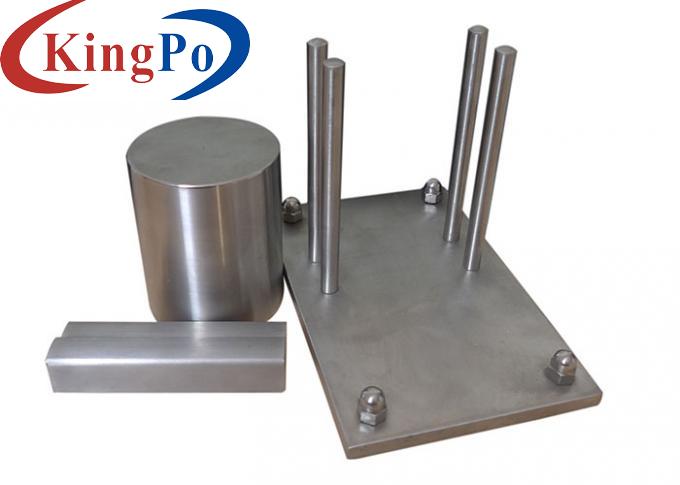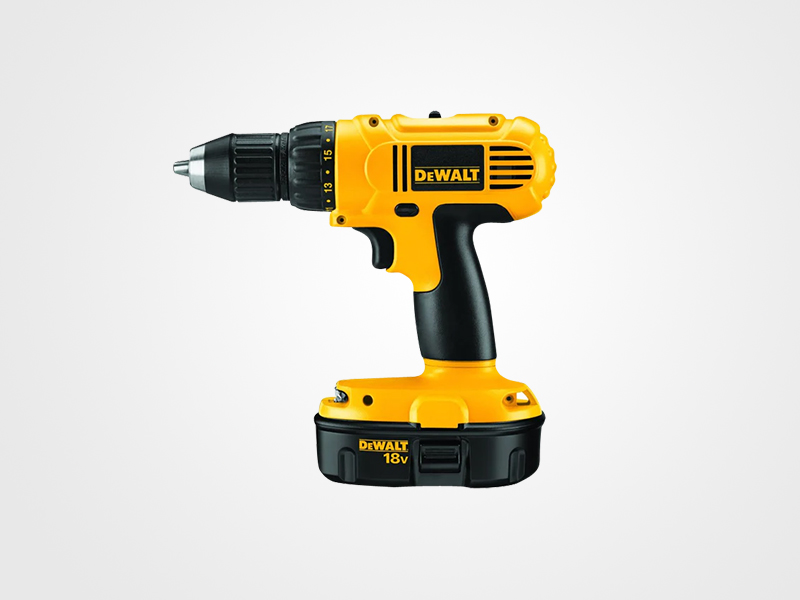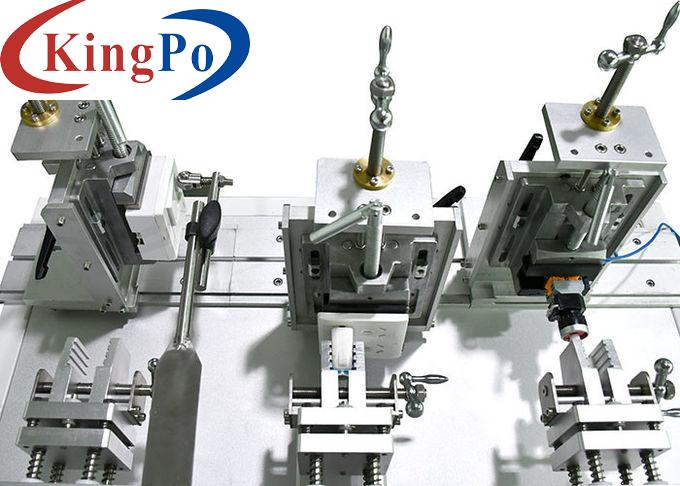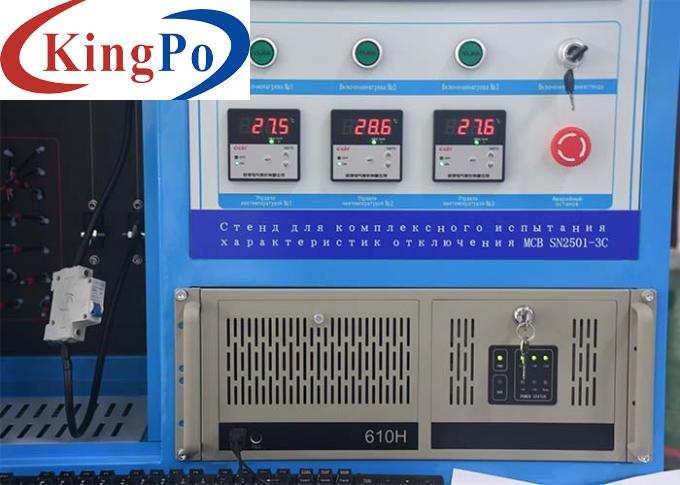Products
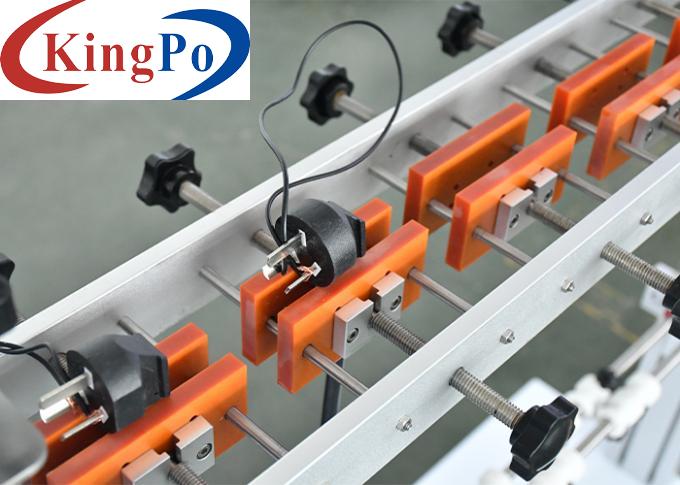
IEC 60884-1 Clause 23.4 Power Cord Flexing Test Equipment For Plugs And Sockets Testing
Products Description
IEC 60884-1 Clause 23.4 Power Cord Flexing Test Equipment For Plugs And Sockets Testing
Product Information:
The power cord flexing test apparatus meets the requirements of IEC 60884-1:2022 figure 21 clause 23.4, which is used to process the flexing test for the flexible cable of non-rewirable plugs and non-rewirable portable socket-outlets.
Features:
Power cord flexing test equipment is a specialized apparatus used to assess the durability and performance of power cords and cables when subjected to repetitive bending or flexing motions. This testing is crucial to ensure that power cords can withstand mechanical stresses and maintain electrical integrity over their intended lifespan. Here is an overview of the Power Cord Flexing Test Equipment and its key components:
Power Cord Flexing Test Equipment Overview:
Technical parameters:
Mechanical Theory
Equipment Characteristics:
The test times (up to 999999) can be preset on this test apparatus, and the test can be carried on and the numbers of tests can be calculated automatically. When the test times reach to the preset value, the system will shut down automatically and give out completion signals. Once the test apparatus connects to external load cabinet, it can be used to process test with load.
Flexing Mechanism: The equipment typically includes a flexing mechanism that applies repetitive bending or flexing movements to the power cord under test. This mechanism simulates the bending stresses that the cord may experience during regular use.
Test Mechanical: A test mechanical or enclosure is used to secure the power cord during the flexing test. The chamber may have adjustable settings to accommodate different cord lengths and configurations.
Bending Radius and Angle Adjustment: The equipment allows for the adjustment of bending radius and angle to simulate various bending conditions that the power cord may encounter in real-world applications.
Cycle Counter: A cycle counter is often included to track the number of flexing cycles applied to the power cord during the test. This helps in monitoring the test progress and determining the point of failure, if any.
Speed Control: The equipment may feature speed control settings to adjust the rate at which the flexing movements are applied to the power cord. Different speeds can be selected to simulate varying levels of mechanical stress.
Tension Control: Some advanced models of the equipment may include tension control features to apply a controlled amount of tension to the power cord while it undergoes flexing, replicating realistic conditions.
Safety Features: Safety features such as emergency stop buttons, overload protection, and protective guards are essential components of the equipment to ensure the safety of operators and prevent accidents during testing.
Data Recording and Analysis: Some Power Cord Flexing Test Equipment may have data logging capabilities to record parameters such as cycle count, duration of test, and any abnormalities observed during testing. This data can be useful for analysis and documentation of test results.
Power Cord Flexing Test Procedure:
Preparation: Secure the power cord in the test chamber of the equipment and set the desired bending radius, angle, speed, and tension settings.
Flexing Test: Initiate the flexing test to subject the power cord to repetitive bending movements. Monitor the cord for any signs of damage, such as insulation cracking or conductor breakage.
Observation: Continuously observe the power cord during the test to note any changes in appearance, electrical conductivity, or mechanical integrity.
Evaluation: Evaluate the test results based on predetermined criteria to determine if the power cord meets the durability requirements and performance standards for its intended application.
Conducting power cord flexing tests using specialized equipment helps manufacturers ensure the reliability and safety of power cords and cables used in various electrical and electronic devices. This testing is essential for identifying potential weaknesses in design or materials and improving the overall quality of power cord products.
Power Supply
AC220V, 50Hz or match the client's site local power supply
Test Stations
6, with 6 sets of clamps
Flexing Times
1-999999 (can be preset). With 6 independent counters corresponding to each station, and there is a general counter
Flexing Rate
10~60 rpm (can be adjustable)
Flexing Angles
Swivel angle on either side for 45°, 60°, 90°
Sample Connecting Wires
6 PCS
Weights
10N/20N*6(the weight as per UL requirements is 113g and 284g)
Breaking Indication
Indicator display
Dimensions
L*W*H=870mm *610mm* 820mm
Conforms to Standard
IEC884-1 Figure 21 and clause 23.4, IEC320-1, VDE0620
The crank block on the reduction gearbox is driven by the electric motor to do the reciprocating action.



